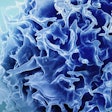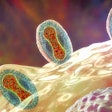
A new software can improve the safety and utility of CRISPR-Cas9 gene editing by detecting off-target changes and eliminating the need for reference genomes, according to a paper published in Bioinformatics Advances.
Researchers at Hiroshima University in Japan developed the software to address two problems with CRISPR-Cas9, a widely used gene-editing system that is held back by some limitations. First, the researchers wanted to quantitatively assess the effect of off-target gene edits on phenotype. Achieving that goal could improve the safety of CRISPR-Cas9 gene editing by supporting the investigation of deleterious off-target effects.
Second, the team sought to expand the use of CRISPR-Cas9 beyond completely characterized genomes. The technology typically depends on basic genomic data. Because tumor cells have widespread genomic rearrangements, the basic data are often incomplete in people with cancer, hindering the application of CRISPR-Cas9 to oncology.
Seeking to address the problems, the researchers created Danger, an acronym for deleterious and anticipatable guides evaluated by RNA-sequencing. Hidemasa Bono, a professor at the Genome Editing Innovation Center at Hiroshima University, discussed the Danger bioinformatics pipeline.
“Our DANGER analysis is a novel software that enables quantifying phenotypic effects caused by estimated off-target. Furthermore, our tool uses de novo transcriptome assembly whose sequences can be built from RNA-sequencing data of treated samples without a reference genome,” Bono said in a statement.
The analysis software uses RNA-sequencing data to identify genomic on- and off-target sites based on de novo transcriptome assembly. Danger assembles the transcriptome without using a reference genome, bypassing one of the two key limitations of CRISPR-Cas9 identified by the researchers.
To address the other key limitation, DANGER identifies off-target edits on the mRNA-transcribed regions that represent the downregulation of expression in edited samples compared to wild-type ones. The software quantifies the phenotypic risk of the off-target edits.
The authors note that Danger has potential applications in medicine, agriculture, and biological research. Bono and his collaborators plan to apply the software to a mix of samples from both patients and crops to understand the phenotypic effects of genome editing. The ultimate goal is to establish safer strategies for genome editing, an effort that other teams can support. Danger is open-source software, allowing researchers to apply the software to their own projects.



















